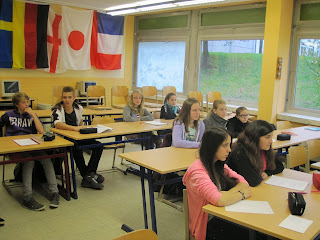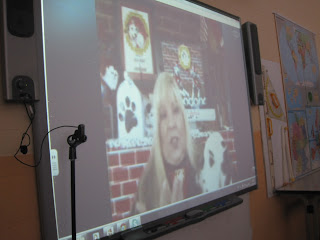 It was very early in the morning, at 7 am UK time, when we met her with a small group of students who are educated in chemistry about climate change and global warming. Teaching this topic you automatically come across the connection between the oceans and climate and how both affect each other.
It was very early in the morning, at 7 am UK time, when we met her with a small group of students who are educated in chemistry about climate change and global warming. Teaching this topic you automatically come across the connection between the oceans and climate and how both affect each other.The students prepared several questions about what they have discussed before in their lessons. They got answers about the ocean circulation, salt concentration and temperature and how that all depend on each other. And they got important information how global warming will impact the oceans and how oceans themselves will impact life on earth when the earth will go on heating up constantly.
The students added some further questions concerning her personality and the profession to become an oceanographer.
Jo herself had prepared a ppt in advance about her work and about the places where she is usally researching which she presented at the beginning.
The whole meeting took about 1 hour time and we, students and me, learned a lot and new things concerning the connection between oceans and climate.
Hope to see you soon.
Thank you very much, Jo Kerr!!!
This is a short cut of the video. The complete video can be watched here.
~~~~~~~~~~~~~~~~~~~~~~~~~~~~
Thanks a lot to all supporters including " Skype in Education" and "Digital Explorer".
Related resources, lesson plans and multimedia materials are available for download from: http://oceans.digitalexplorer.com/resources/?controller=search















